


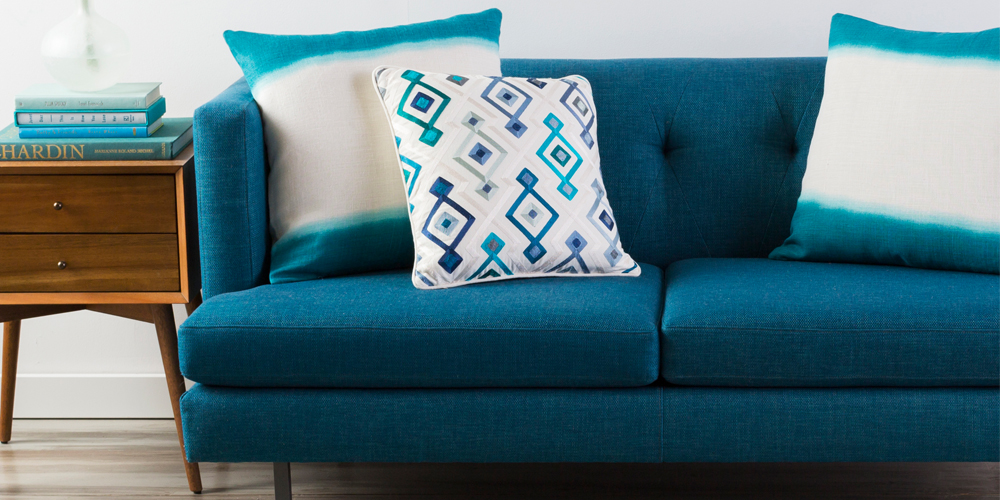
Choosing a new sofa is one of the most daunting furniture purchases you will make. Ideally, a sofa is one of those furniture pieces that will grow with you from one life stage to the next. With limitless options available, finding the perfect sofa can feel like a huge investment, so it is important to choose wisely when searching for the perfect sofa that will complement your lifestyle and home.
The biggest factor that will determine both price and quality is the way your sofa is constructed. A well-built sofa is a good investment that ensures a comfortable place to sit in, and will endure after rigorous daily use.
Just like a good foundation to a house, the quality and strength of your sofa's frame material is essential to the longevity of your sofa.
Benefits: Long considered the hallmark of quality, kiln-dried hardwood will remain sturdy and strong for decades.Kiln-dried hardwood is the most durable, and will retain its shape over time and use.
Good to Know: Drying hardwood (such as oak, ash, or beech) in a kiln, removes approximately 90-95% of moisture from the wood, which prevents warping and bowing. Avoid softwood even if it is kiln-dried (such as cedar, pine, or spruce). Kiln-dried hardwood frames are made from about 2-inch thick hardwood. Kiln-dried hardwood frames come with a higher price tag.
Benefits: The alternative to hardwood is engineered wood, which is less expensive and comes at a lower price tag than hardwood frames. Plywood comes in different grades and qualities, but engineers and furniture-makers agree that high-quality plywood is proven to be just as sturdy as hardwood.
Good to Know: Plywood is multiple sheets of lumber glued together under high pressure. High-quality plywood is at least 11-13 layers of wood. The higher number of layers of plywood paired with interlocking joints makes for a frame as sturdy and durable as kiln-dried hardwood.
Benefits: Particleboard is another type of engineered wood that is less expensive than hardwood frames. Frames constructed from particleboard are lightweight and easy to maneuver.
Good to Know: Particleboard is made from compressed wood chips and fibers glued together. Even though particleboard is less expensive, particleboard is significantly less strong than both hardwood and plywood. Particleboard frames (and medium density fiberboard, or MDF) are not as structurally sound as kiln-dried hardwood or high-quality plywood, and should be avoided.
Benefits: A metal frame provides touch construction, and can have a lighter, less bulky build.
Good to Know: Changes in humidity can affect the integrity of metal frames, bending and warping due to oxidation. Look for metal frames that have been treated to protect against atmospheric changes.
How the frame is constructed is as important as the materials it is made from. Look for reinforced joints and corners. High-quality frames, no matter what type of material is used, are screwed and glued at all the joints, or use interlocking joints. Corners are reinforced with blocks connected with double dowels and screws to protect against breaking. Staples are a general indicator of a low-quality frame.
A sofa's suspension determines the bounce and overall comfort of your sofa. The suspension system also helps determine your sofa's resilience to wear and tear.
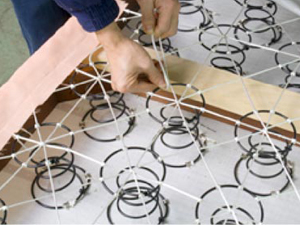
Eight-Way Hand-Tied Coils
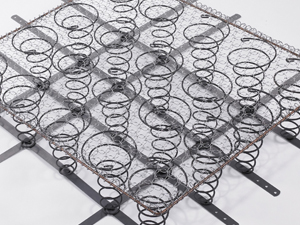
Drop-In Coil System
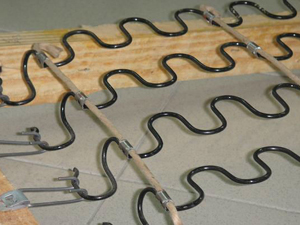
Sinuous Springs
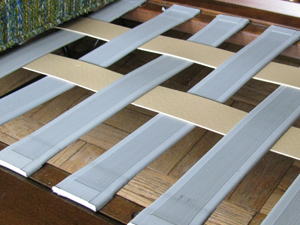
Web Suspension
Benefits: Considered the best springs on the market, the eight-way hand-tied steel-coil system responds to differing degrees of pressure your body puts on the springs. This means even comfort with a seat that can move and adjust to support your body's contour.
Good to Know: In an eight-way hand-tied coil system, the frame is turned upside-down and individual coil springs are attached with metal clinches from the bottom coil to the foundation. The coils are hand-tied and knotted to each other across the tops in all directions from front-to-back, side-to-side, and diagonally, which makes the eight-way hand ties. This system secures the foundation built for your sofa, so that your sofa doesn't wear down quickly and become uncomfortable to sit on. Generally, the higher number of coils means more support and comfort.
Benefits: The drop-in spring system is a less expensive alternative to the eight-way hand-tied coils system due to the difference in its construction setup.
Good to Know: The drop-in coil system closely resembles the eight-way hand-tied coils system by providing coil support, but is not actually built into the frame like eight-way hand-tied coils. Drop-in systems contain a premade framework of coils that are connected to one another by metal clips. This framework is then inserted into the sofa base and fastened to the frame. Because the coils are not built into the sofa's frame, it is a less expensive option.
Benefits: Sinuous springs offer a somewhat softer, yet firm seat that some customers prefer. Certain sofa styles (such as low-profile and modern sofas) are better suited for sinuous construction since it requires less space in the frame which creates a more streamlined silhouette. Sinuous construction offers an economical alternative to eight-way hand-tied models and less potential for sagging over time.
Good to Know: Sinuous construction is made with tempered and pre-arched metal wire springs that are bent into a serpentine S-shape or zigzag shape. These springs are attached to the sofa frame and run from the front rail to the back of the seat, and spaced every few inches. All of the springs act as a unit instead of individual springs. Support wires cross laterally to provide additional stability and support, but sinuous construction lacks the tailored adaptability that eight-way hand-tied coils offer.
Benefits: When built in conjunction with a tensioner, high-quality webbing suspension provides plenty of support and carries great memory. Web suspension eliminates sagging.
Good to Know: Stretch web suspension consists of bands of elasticized webbing (2 to 3 inches wide) that cross the seat and back, and are tacked to the sofa frame to create a hammock-like platform which supports cushions. Webbing can be made with natural fibers such as jute, or synthetic materials, such as polypropylene. Not all web suspensions are created equal. While web suspension alone offers the least support, web suspension built with a tensioner that securely fastens the webbing to the frame, ensures the stability of the sofa. Propex web suspension is 3-inch strips of synthetic, non-stretch Propex materials laced front-to-back and side-to-side of the frame. A solid sheet of the same material is applied over the strips to give a solid foundation.
Cushions contribute further to the overall comfort of your sofa. There are several types of filling to consider to bring your desired comfort level.
The most common filling material is foam which comes in a variety of densities which lend different support levels. The higher the density of foam, the firmer the cushions will be. High-density polyurethane foam provides the firmest cushion support and is less prone to degradation. Low-density foam typically offers a soft to medium level of firmness, but tends to degrade faster than high-density foam. Foams labeled “HR”, or high-resilient density, are specifically made to resist rigorous wear and sagging. High-resilient foam cushions have a lifespan of 14 years or more. Memory foam is a technologically advanced type of foam that supports and conforms to your body’s contour, which makes it ideal for customers with muscle and joint pain.
Batting is used in combination with foam cushions to bring a smooth, streamlined appearance to cushions. Batting comes in two thicknesses: 25.5 ounces and 42.2 ounces. Cotton, polyester, and wool batting is standard. Wool batting is available in needled and layered form. Needled wool is used to cover sofa springs because of its durable qualities. Layered wool degrades quickly which make them a less than ideal choice for sofas.
Foam and Dacron: These cushions consist of a foam core with Dacron batting wrapped around it. This is a good option for customers with down or feather allergies. It is an economical option that carries a medium to firm density.
For customers on a budget, polyester is an inexpensive option that comes in several densities.
Soft polyester: smooth, durable, and retains shape
“Ply-A” polyester: extremely soft, will not retain shape with applied pressure
Faux-down polyester: imitates the look and feel of down feathers for less money
Cluster-polyester: tiny balls of fiber that are one of the most durable, long-lasting types of polyester
Feather-filled, down cushions are ideal for customers who prioritize softness in their sofa cushions. Feather-filled cushions are the cheaper option between down-filled cushions. Feathers used for filling typically come from duck or chicken feathers. Down comes from the underbellies of geese. Without feather-proof casings, feather fill can start to come out of cushions and won’t dry properly when it becomes wet. On the other hand, unless 100% down is sewn into individual pockets, it can get lumpy. For a firm base, elect cushions with a foam core that is wrapped with an outer layer of feathers or down.
25% down / 75% feather: When selecting this option, it is important that the down is sewn into individual pockets so that the down support remains smooth, and doesn’t become lumpy over time. The firmness will depend on the density of the down.
50% down / 50% feather: These cushions are 100% down, but have a higher down to feather ratio. Considered a high-grade option, these cushions display a soft to medium density that make them soft and squishy, but retain its shape easily.
When selecting the size of your sofa, consider the overall height (including feet and back cushions), overall width, and overall depth of your sofa.
Height: The standard height of a sofa back ranges between 30 inches to 36 inches. The standard seat height of a sofa ranges between 18 inches to 22 inches. Depending on the style, sofas with low profiles bring a sleek, streamlined appearance that will fill well in modern spaces. High-backed sofas will work best in spaces with tall ceilings.
Width: Sofas vary in width size. Standard sofa sizes range from 6 feet to 8 feet long. Petite seating options, such as loveseats, range between 4 feet to 6 feet in length.
Depth: The depth of a standard sofa is 32 inches to 42 inches for a sofa, or 28 inches to 30 inches for a loveseat. If you anticipate using your sofa for taller family members or guests, opt for deeper sizes.
It is important to select a fabric that reflects your style, as well as lifestyle. The most common upholstery fabrics include:
Cotton: Cotton is strong and versatile, and comes in a variety of weaves and finishes that make it a versatile fabric to use for upholstery. Since cotton can soil easily, it is a good option to use for slipcovers, which can be laundered frequently. Cotton is prone to stretching and wrinkling depending on the weave.
Leather: Durable and easy to clean, leather is a fabric that continues to age well with time. While top grain (best quality), split hides, and how it is dyed affect cost, leather develops more character and softness with age. Tears and holes are difficult to repair. To learn more about leather, click here.
Faux Leather: An economical alternative to leather is faux leather, which carries much of the same benefits as leather, including its easy maintenance and durability. Faux leather doesn’t carry the same softness as more expensive leather, but is a practical choice for high-traffic seating arrangements.
Microfiber: Microfiber is a less expensive alternative to suede, that offers much of the same benefits of suede including its softness and durability. The added benefit of microfiber is that it is wrinkle-resistant and lightweight. Although it is stain-resistant, microfiber tends to pick up watermarks.
Velvet: Velvet is made out of silk, cotton, rayon, linen, or wool fibers and brings a luxurious and plush feel to any application. Velvet can prove to be difficult to maintain and clean because the pile is very fragile. Depending on type, velvet upholstery may need to be dry cleaned.
Polyester: While polyester is a synthetic fabric, it is often blended with natural fibers, such as cotton, to produce a fabric that carries the benefits of both fabrics. Polyester carries the softness of cotton, while also being wrinkle and fade resistant.
Regardless of price point, the easiest way to start is by narrowing down your choices by style.
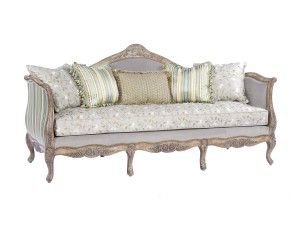
Popular in the first half of the 18th century (especially among the royal courts of Europe), this neo-Classical, French parlor seating style is best recognized by its namesake cabriole leg. The elaborative, yet elegant silhouette features an exposed (often wooden) frame with a ball-and-claw foot design defined by an ‘S’-design: the upper portion of the leg curves outward, while the lower portion curves inward. A curved back falls gently into sloping arms for a graceful design with continuous lines.
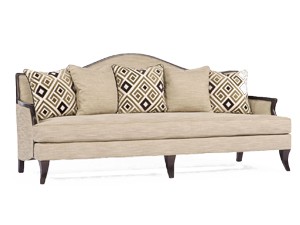
Named after its arched back “hump”, the Camelback sofa is an enduring design that has been around since the 18th century. It is easily distinguished by its back, which typically has one or two humps, and showcases a unique set of wide arms that flare outward. The Camelback has proven to be a versatile design with many designers adding their own unique twist on this traditional, yet elegant design.

Intrinsically luxurious with a distinguished profile, the classic Chesterfield sofa is easy to spot. A button, tufted back with large rounded arms that reach the same height as its back, characterize this design. First created for Phillip Stanhope, Earl of Chesterfield (1694-1773), this seat was first referred to as a “gentleman’s chair”. Accordingly, the Chesterfield fits right at home in masculine-style libraries and studies. However, we’re noticing the Chesterfield popping up in modern interiors upholstered in sumptuous fabrics like velvet and leather.
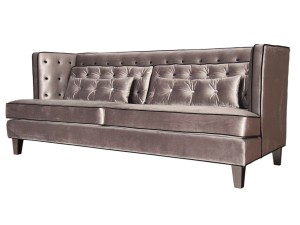
Designed with royalty in mind, the Knole sofa was originally created during the 17th century as a cross between an upholstered throne and bench. Its deep seating, high back and sides were intended to shield drafty interiors in English estates and provide privacy among aristocratic ladies. The addition of a high back meant that this type of seating could be featured more centrally in a room instead of pushed up against a wall. Consequently, the Knole has served as the prototype to the modern sofa. Today’s Knole sofas preserve the distinctive silhouette of the original design and remains popular in traditional interiors.
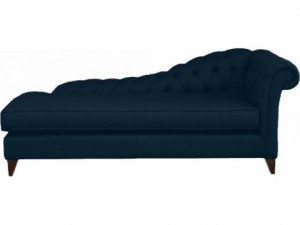
Probably most associated as the choice of sofa for psychoanalysts and Sigmund Freud, the chaise lounge sofa is more like a long reclining chair. Its head-rest and partial back which is attached to an extended seat make it ideal for lounging. It is a versatile piece that can act as a couch by day and bed at night.
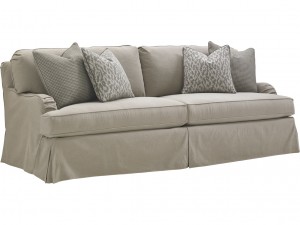
Also referred to as the Bridgewater sofa, the English Roll Arm is a lounge-friendly design which showcases deep-seated loose seat cushions, a high back, and low rounded arms. Its relaxed, casual appearance is a favorite among many designers, and its versatility means a never-go-out-of-style design that will look good in any household. Some English Roll Arm sofas also feature a skirt which conceals its feet for a clean-lined look.
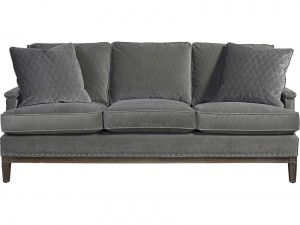
The Lawson sofa is the epitome of “American casual” style with a simple, clean silhouette that shuns fussy embellishments and ornamentation. Designed especially for comfort, the Lawson sofa distinctively features loose back cushions supported by a pitched back that accommodates a comfortable sitting angle. The original Lawson design from the early 20th century had three attached back pillows over three seat cushions, but its versatile design has lent itself to various adaptations including a convertible sofa-sleeper.
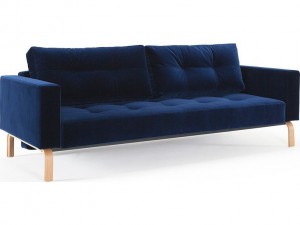
With its sleek lines and clean silhouette, the Mid-Century style sofa has proven to be a celebrated classic of modern design. The Mid-Century design movement which favored simplicity, emerged roughly between 1930-1965, and has proven to be an influential style popular today. The low-profile, geometric design of the Mid-Century sofa has proven to be a fashionable choice with retro detailing like a tufted back. This sofa provides plenty of visual impact especially in modern minimalist homes.
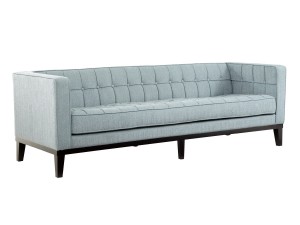
Consider the Tuxedeo sofa the Chesterfield sofa’s modern cousin. Like the Chesterfield, the Tuxedo sofa features a high back and arms at the same height. The difference is its ultra sleek and modern style which features a geometric squared-off back paired with straight arms and deep seating. Its upholstered back with tufted detailing offers a hint of classic formalism, for a design that is both timeless and modern.
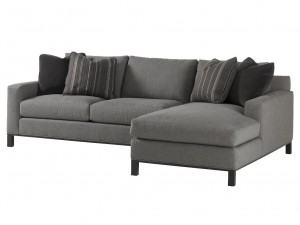
Providing ample seating, sectionals are family-friendly sofas outfitted with several components that can be configured to fit the specific requirements of any space. Floating components, like an armless chair or loveseat, can be arranged with a corner chair or lounge to create customized seating that can seat everyone.
Rotate cushions and pillows on your sofa every week to help extend the life of your sofa.
Equal amounts of wear and light exposure means a sofa that will last for decades.
When you are ready to shop, browse LuxeDecor’s stunning selection of sofas here.



